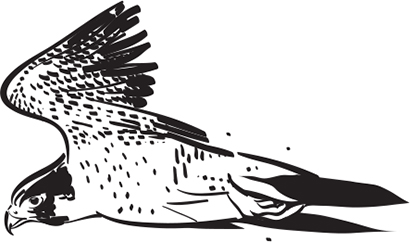
“If the best in the world are stretching their asses off in order to get strong, why aren’t you?”

Christopher Sommer (IG/FB: @GYMNASTICBODIES, GYMNASTICBODIES.COM) is a former U.S. National Team gymnastics coach and founder of GymnasticBodies, a training system that I’ve tested for the last 8 months (no affiliation). As a world-renowned coach, Sommer is known for building his students into some of the strongest, most powerful athletes in the world. During his extensive 40-year coaching career, Coach Sommer took meticulous notes on his training techniques—his wins and failures—so that he could translate the best elements into a superior exercise system for both high-level and beginner athletes. His four decades of careful observation led to the birth of Gymnastics Strength Training (GST).
Spirit animal: Falcon
The combination of GST and AcroYoga (here) has completely remodeled my body in the last year. I’m more flexible and mobile at age 39 than I was at age 20. I’m going to skip explaining a lot (e.g., Maltese, Stalder press handstand) that is best seen in video or pictures, though I’ll describe the most critical (starting here). Google is your friend.
“If you want to be a stud later, you have to be a pud now.”
Coach first told me this when I was complaining about slow progress with shoulder extension (imagine clasping your hands together behind your back, arms straight, then raising your arms without bending at the waist). When in doubt, work on the deficiencies you’re most embarrassed by. My biggest weaknesses are shoulder extension and bridging using the thoracic spine (versus lower-back arch). After improving them 10% over 3 to 4 weeks—going from “making coach vomit” to merely “making coach laugh”—a host of physical issues that plagued me for years completely disappeared. To assess your biggest weaknesses, start by finding a Functional Movement Screen (FMS) near you. Related from Sommer: “You’re not responsible for the hand of cards you were dealt. You’re responsible for maxing out what you were given.”
Sommer’s distinction between “flexibility” and “mobility” is the most concrete and clear I’ve heard. “Flexibility” can be passive, whereas “mobility” requires that you can demonstrate strength throughout the entire range of motion, including the end ranges. See the J-curl and pike pulse exercises here and here for two examples of mobility, which can be also be thought of as “active flexibility.” The pike pulse is a particularly clear demonstration, as it tests “compression strength” in a range that most people never experience.
“Slow down. Where’s the fire?” This is Coach’s constant reminder that certain adaptations take weeks or months of consistent stimuli (see here). If you rush, the reward is injuries. In GST, there are surprising stair steps after long periods of zero progress. Roughly six months into doing his “hamstring series” with minor gains, I seemingly doubled my max ranges overnight. This was completely unsurprising to Sommer.
“I used to tell my athletes there are stupid gymnasts, and there are old gymnasts, but there are no old, stupid gymnasts because they’re all dead.”
Coach Sommer dislikes the fitness fixation on “diet and exercise.” He finds it much more productive to focus on “eat and train.” One is aesthetic, and the other is functional. The former may not have a clear goal, the latter always does.
Coach describing his first-ever seminar for non-gymnast adults, in roughly 2007:
“We’ve got all of these beasts there [advanced lifters], and they’re strong. I tried to do my entry-level plyometric group work and some floor work with them. The stronger the athlete, the faster they went down: knees, lower back, ankles … from baby stuff. We’re not talking anything hard. We’re talking about standing in place, and, with knees straight, being able to bounce down the floor using just your calves.
“No way. Their tissues couldn’t take it. They hadn’t done anything like it. [To show you] how bad mobility was, we had 15 minutes on the schedule to stretch. Nothing intricate, nothing intense—just an easy, basic stretch. Get them loosened up for the day. That stretch took an hour and a half to complete. There were bodies lying everywhere. It was like I was in Vietnam or filming a war movie. I turned to my staff, and I’m like, ‘What the fuck am I supposed to do now? They failed warmup. They failed warmup.’”
Male Olympic gymnasts don’t have biceps the size of their waists from curls. It comes largely from straight-arm work, especially Maltese work on rings.
But how on earth can you practice a Maltese as a novice? I use a 50/50 pulley system to cut my body-weight resistance in half, which is similar to the Ring Thing (Power Monkey Fitness) or generic “dream machine” that Jason Nemer (here) loves using. I combine this with “power levers,” strap-on metal gauntlets that allow me to attach the ring ropes to my forearms anywhere between the elbow and the fist. This allows me to use progressive resistance, starting near the elbow and moving out to the hand. The best versions are currently only available in Europe, but there are vaguely similar “iron cross trainers” available in the U.S.
The following goals incorporate many different aspects of strength and mobility into single movements:
Beginner: J-Curl
Intermediate: Straddle Press Handstand [TF: I’m working on this]
Advanced: Stalder Press Handstand
Coach Sommer introduced me to a Russian medical massage specialist who recommended I use the plug-in (not cordless) model of the Hitachi Magic Wand on its high setting. I’ve never experienced such heights of ecstasy. Thanks, Vladmir!
Just kidding. In this case, it’s for relaxing hypertonic muscles (i.e., muscles that are tense even though they shouldn’t be). Just place the wand on your muscle belly (not insertion points) for 20 to 30 seconds, which is often all it takes at the proper hertz. Tension headaches or a stiff neck? It’s great for relaxing the occipitals at the base of the skull. Warning: Having Hitachi Magic Wands lying out around your house can go terribly wrong—or terribly right. Good luck explaining your “hypertonic muscles.” As one friend said to me, “I think my wife has that same problem….”
Unusual and Effective Bodyweight Exercises
In less than eight weeks of following Coach Sommer’s protocols, I saw unbelievable improvement in areas I’d largely given up on.
Try a few of my favorite exercises, and you’ll quickly realize that gymnasts use muscles you didn’t even know you had.
Coach Sommer borrowed this exercise from power lifter Donnie Thompson, who calls it the “butt walk.” Donnie “Super D” Thompson is the first person to hit a power lifting total of more than 3,000 pounds (bench press + deadlift + squat). The QL walk is intended to get your glutes and quadratus lumborum (QL) firing, the latter of which Donnie calls “an angry troll in your back”:
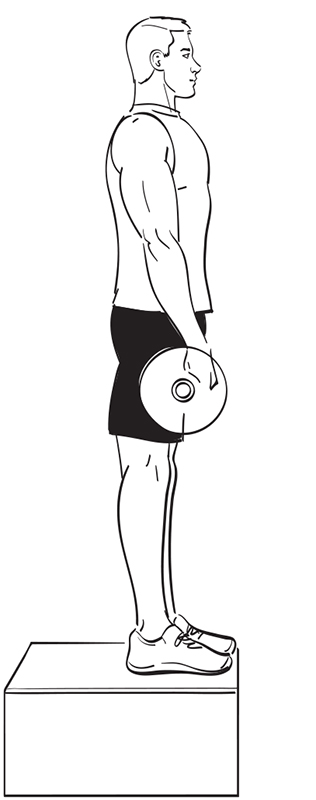

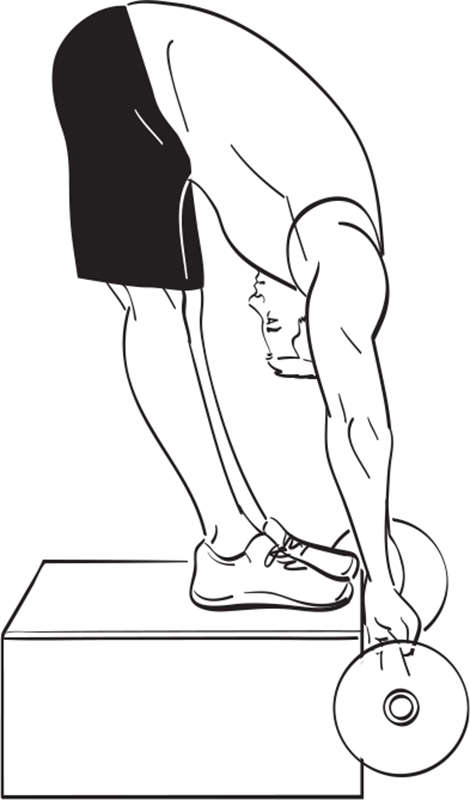
Think of this as a controlled, slowly rounded, stiff-legged deadlift. From Sommer: “Progress slowly and patiently. Do not rush. For this type of loaded mobility work, never allow yourself to strain, grind out reps, or force range of motion. Smooth, controlled movement is the order of the day.” The ultimate goal is body weight on a bar, but start with 15 pounds. I currently use only 50 to 60 pounds. This can perform miracles for thoracic, or mid-back, mobility, all while helping the hamstrings in the pike position. When I asked Coach Sommer how often I should do these, he said, “We do these like breathing.” In other words, at a minimum, J-Curls are done at the beginning of every primary workout.

So you can do 10 to 20 regular dips? Fantastic. I challenge you to do 5 slow dips on rings with proper turnout at the top (“support position”). Imagine the lines of the knuckles pointing to 10 and 2 o’clock at the apex. Perform this without piking (bending at the hips) or leaning your torso forward. This requires the brachialis to work like a mofo at the top, and it requires good shoulder extension at the bottom—my nemesis. Curse me, then thank me in 8 weeks. If you can’t do 15 regular dips, consider starting with push-ups with RTO, which Kelly Starrett (here) first showed me. For the push-ups, ensure that you use the hollow and protracted position from cast wall walks here.
This is an excellent low-risk option for smashing your mid-traps and external rotator cuff muscles, which are used for handstands and just about everything in gymnastics. Visualize popping up like Dracula in a coffin, then hitting a double bicep pose. The catch: Your hands are holding rings the entire time. Once you can do 20 reps of hinge rows, Google “lat flys” and progress to those.
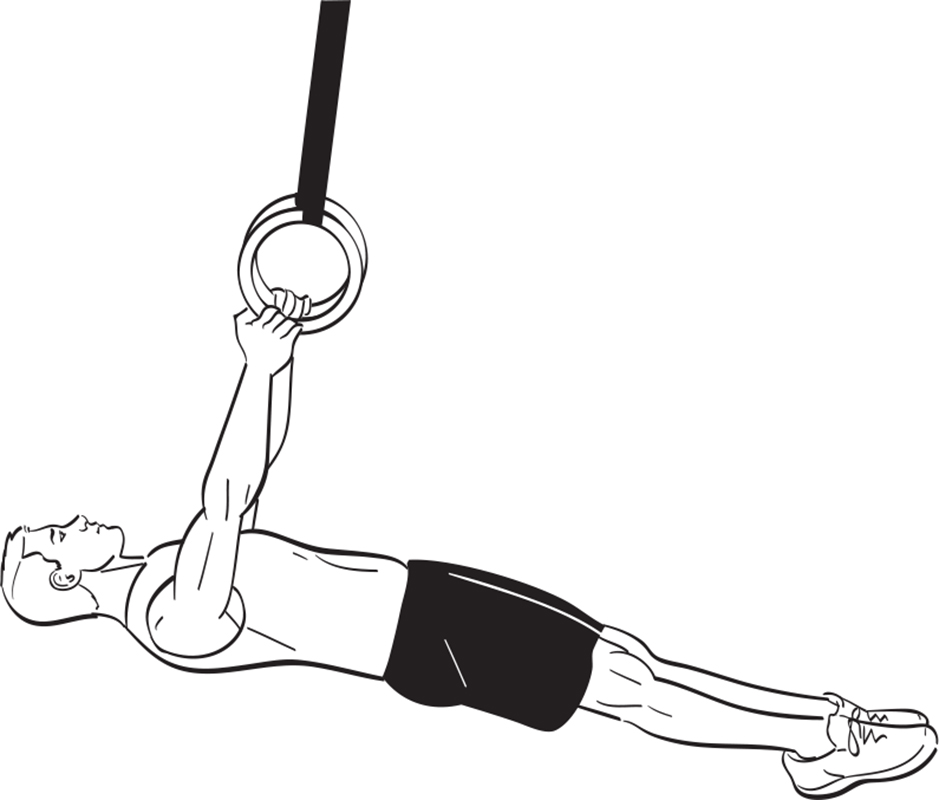

These are hugely productive and a major wakeup call for most people. 99% of you will realize you have no shoulder flexibility or strength in this critical position.

When one of my meathead friends is laughing at my GST exercises, I have them attempt this. It usually ends with a head shake and a puzzled “Holy fuck."
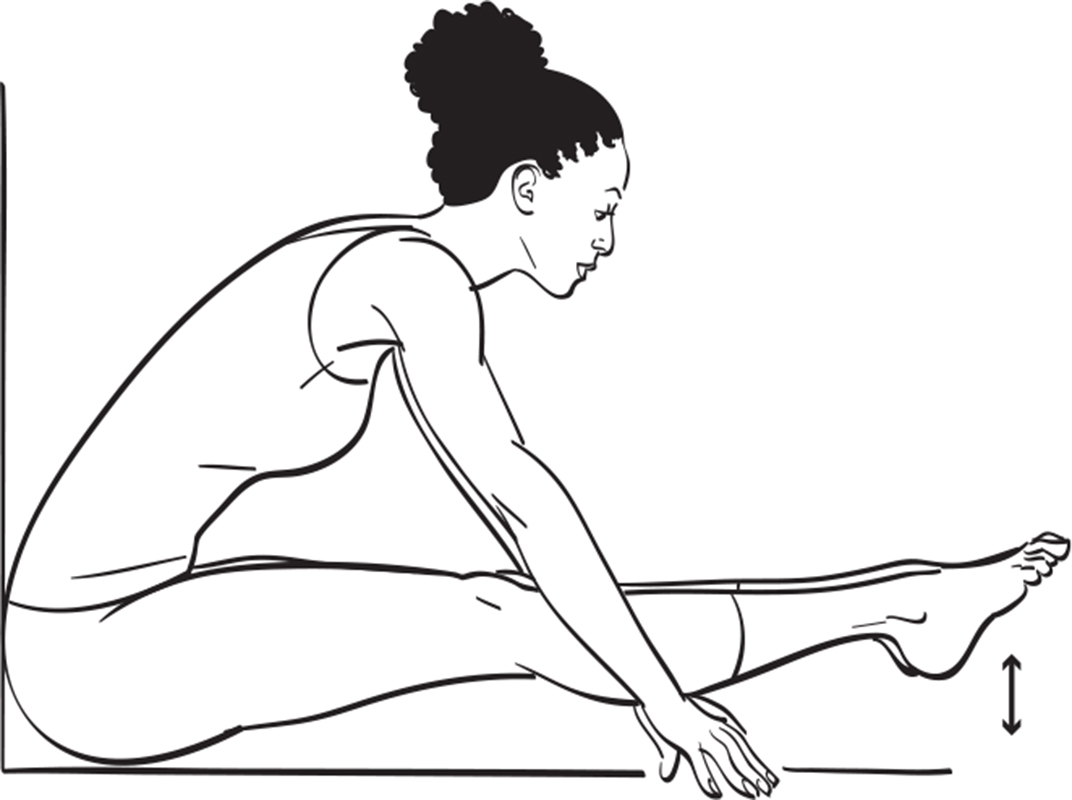
If you did really well, now try it with your lower back against a wall. What happened?! Sorry, killer, you weren’t actually pulsing, you were rocking back and forth like a cradle. Do it against the wall to keep yourself honest.
If you have no gymnastics background, this one will be fun/terrible. I use cast wall walks as a workout finisher and recommend you do the same, as you’ll be worthless afterward. First, let’s define the position you need to maintain.
Torso “Hollow”: Sit on a chair, back straight, with your hands on your knees. Now, try to bring your sternum (chest bone) to your belly button; “shorten” your torso by 3 to 4 inches by contracting and pulling in your abs. You’ll maintain this position throughout the entire exercise. No lower-back arch or sag permitted.
Shoulders “Protracted”: Keep your torso “hollow” per the above. Now, pretend you’re hugging a telephone pole. Your shoulders should be well in front of your chest, sternum pulled back strongly. Straighten your arms but maintain this position. Next, without losing any of the aforementioned, lift your arms overhead as high as you can. There you go. Now we can begin.



Target is 10 reps, but stop this one at least a few reps before muscular failure. Otherwise, woe unto your face when gravity opens a can of whoop-ass on your flattened head.